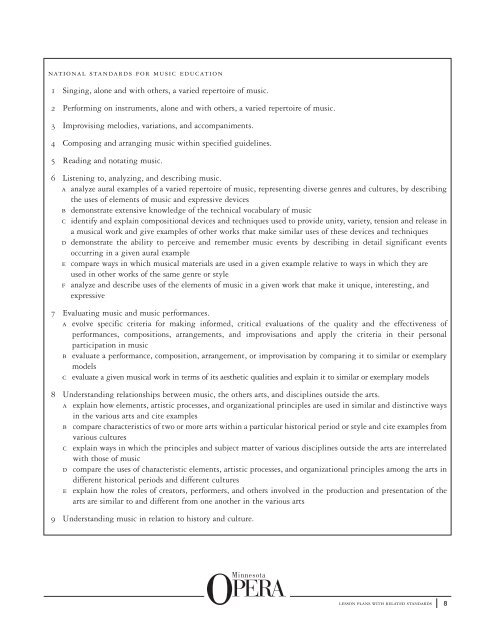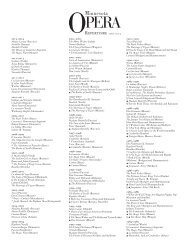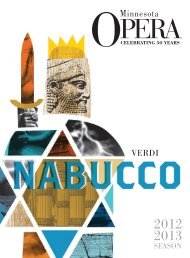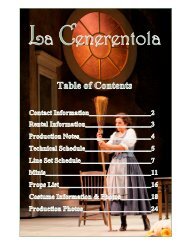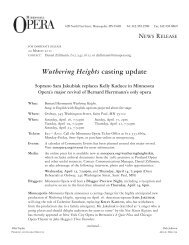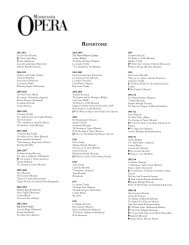You also want an ePaper? Increase the reach of your titles
YUMPU automatically turns print PDFs into web optimized ePapers that Google loves.
national standards for music education<br />
1 Singing, alone and with others, a varied repertoire of music.<br />
2 Performing on instruments, alone and with others, a varied repertoire of music.<br />
3 Improvising melodies, variations, and accompaniments.<br />
4 Composing and arranging music within specified guidelines.<br />
5 Reading and notating music.<br />
6 Listening to, analyzing, and describing music.<br />
a analyze aural examples of a varied repertoire of music, representing diverse genres and cultures, by describing<br />
the uses of elements of music and expressive devices<br />
b demonstrate extensive knowledge of the technical vocabulary of music<br />
c identify and explain compositional devices and techniques used to provide unity, variety, tension and release in<br />
a musical work and give examples of other works that make similar uses of these devices and techniques<br />
d demonstrate the ability to perceive and remember music events by describing in detail significant events<br />
occurring in a given aural example<br />
e compare ways in which musical materials are used in a given example relative to ways in which they are<br />
used in other works of the same genre or style<br />
f analyze and describe uses of the elements of music in a given work that make it unique, interesting, and<br />
expressive<br />
7 Evaluating music and music performances.<br />
a evolve specific criteria for making informed, critical evaluations of the quality and the effectiveness of<br />
performances, compositions, arrangements, and improvisations and apply the criteria in their personal<br />
participation in music<br />
b evaluate a performance, composition, arrangement, or improvisation by comparing it to similar or exemplary<br />
models<br />
c evaluate a given musical work in terms of its aesthetic qualities and explain it to similar or exemplary models<br />
8 Understanding relationships between music, the others arts, and disciplines outside the arts.<br />
a explain how elements, artistic processes, and organizational principles are used in similar and distinctive ways<br />
in the various arts and cite examples<br />
b compare characteristics of two or more arts within a particular historical period or style and cite examples from<br />
various cultures<br />
c explain ways in which the principles and subject matter of various disciplines outside the arts are interrelated<br />
with those of music<br />
d compare the uses of characteristic elements, artistic processes, and organizational principles among the arts in<br />
different historical periods and different cultures<br />
e explain how the roles of creators, performers, and others involved in the production and presentation of the<br />
arts are similar to and different from one another in the various arts<br />
9 Understanding music in relation to history and culture.<br />
lesson plans with related standards<br />
8


